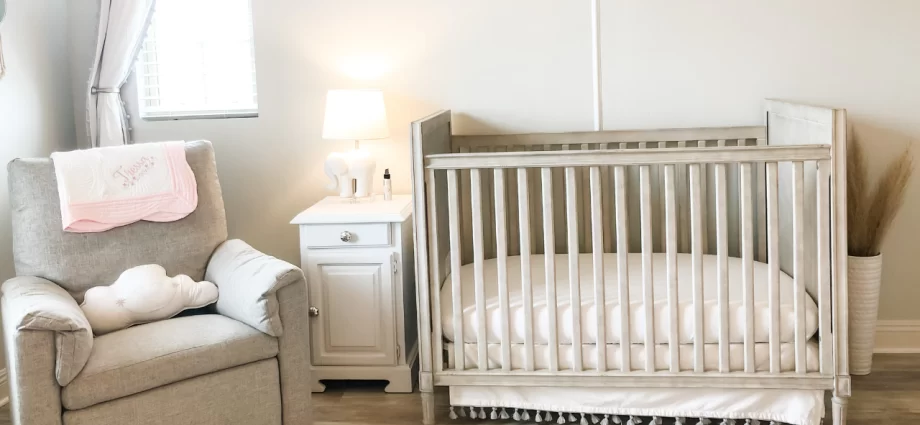When it comes to parenting, one of the most important aspects is ensuring that your infant gets quality sleep. A peaceful and soothing sleep environment can make a significant difference in your baby’s sleep patterns and overall well-being.
In this article, we’ll explore the essential tips for setting up a serene and calm sleep environment for your infant bed.
Choose the Right Infant Bed
Selecting the right infant bed is the first step in creating a serene sleep environment. Consider a crib that meets safety standards and provides a comfortable and secure space for your baby. Many parents also opt for convertible cribs that can grow with their child, offering long-term value.
Use Breathable Bedding
For your infant’s safety and comfort, it’s crucial to use breathable bedding. Choose a firm mattress with a fitted sheet designed specifically for infant beds. Avoid using loose bedding, such as pillows, blankets, or stuffed animals, as they can pose suffocation hazards.
Swaddle blankets or sleep sacks are excellent alternatives to keep your baby warm without compromising safety.
Maintain a Comfortable Temperature
Ensure that the room where your infant bed is located maintains a comfortable temperature. Overheating can disrupt your baby’s sleep and increase the risk of sudden infant death syndrome (SIDS). The recommended room temperature is typically between 68-72 degrees Fahrenheit (20-22 degrees Celsius).
Consider Sound and White Noise
Some infants find white noise or gentle lullabies soothing and helpful in achieving a peaceful sleep. You can use a white noise machine or play soft, calming music to create a serene auditory environment. Be mindful of the volume, keeping it at a level that is comfortable for your baby.
Ensure Darkness
Darkness can significantly improve the quality of your infant’s sleep. Consider using blackout curtains to block out external light sources. This can be particularly helpful during daytime naps when natural light can interfere with your baby’s sleep.
Create a Soothing Bedtime Routine
Establishing a calming bedtime routine can signal to your baby that it’s time to sleep. A soothing routine might include activities like a warm bath, a gentle massage, or a lullaby. Consistency is key, as babies thrive on predictability.
Safe Sleep Positioning
The American Academy of Pediatrics recommends that babies be placed on their backs to sleep to reduce the risk of SIDS. Ensure that your baby is positioned on their back in the infant bed. This sleep position is the safest and promotes better airflow.
Keep the Bed Uncluttered
The sleep environment should be free from clutter. Avoid placing any items in the infant bed, such as toys, bumper pads, or loose bedding. A clean and uncluttered sleep space is safer for your baby.
Use a Pacifier
Some studies have suggested that using a pacifier during sleep may reduce the risk of SIDS. If you choose to offer a pacifier to your baby, do so at naptime and bedtime.
Offer Comfort and Security
Babies often find comfort in feeling secure. Consider using a soft and breathable sleep sack or swaddle blanket to give your baby the sensation of being cuddled without any risks associated with loose bedding.
Monitor the Room Humidity
Maintaining appropriate room humidity can also contribute to a calm sleep environment. Dry air can lead to discomfort and disrupted sleep. You can use a humidifier to keep the room’s humidity level in a comfortable range.
Respond to Your Baby’s Cues
One of the most important elements of a calm sleep environment is your response to your baby’s cues. If your baby wakes up during the night, be attentive and responsive. Ensure that your baby is fed, changed, and comfortable before settling them back to sleep.
Room Sharing
It is recommended that infants share a room with their parents, but not the same bed, for at least the first six months of life. Room sharing can improve the safety of your infant’s sleep environment and make it easier for you to respond to your baby’s needs during the night.
Address Sleep Regressions
It’s common for infants to experience sleep regressions at various stages of their development. These periods can disrupt sleep patterns and create stress for parents. Understanding that these regressions are a normal part of a baby’s development can help you navigate them with patience and understanding.
Stay Informed and Seek Support
Finally, it’s important to stay informed about safe sleep guidelines and best practices for infant sleep. Reach out to your pediatrician or a sleep consultant if you have concerns about your baby’s sleep patterns or need guidance on creating a serene sleep environment.
Conclusion
Creating a calm sleep environment for your infant bed is essential for their well-being and your peace of mind. By following these tips and safety guidelines, you can provide your baby with a secure and soothing space to sleep, setting the foundation for healthy sleep habits that can benefit them throughout their childhood.
Remember that each baby is unique, and it’s important to respond to your baby’s individual needs while also ensuring a safe sleep environment.

